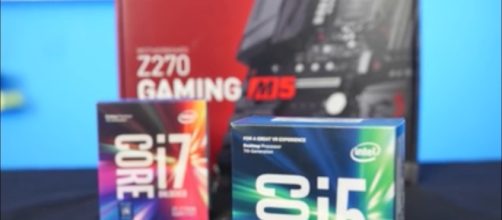Intel succeeded its Skylake generation with the introduction of Kaby Lake. The processor is turning out to be just as good as its predecessor, given its performance on MacBook Pro (2017) and Dell XPS 13. But it does come with a drawback. The model is considerably larger in size, a report by Tech Radar reads. One would expect a newer generation of processors to shrink down in size, but the complete opposite took place with Intel’s seventh and eighth generation of motherboards.
Speculated release date of the GPU
Intel introduced Kaby Lake in 2016 and companies like HP, Lenovo, and Dell among others were quick to take a bite of it.
A majority of the laptops and desktops started being powered by the seventh-generation Kaby Lake. The processor will be succeeded by the eighth generation Kaby Lake Refresh, which is speculated to be called, “Coffee Lake.” As noted by Tom’s Hardware, the company still has to figure out a few things before they finalize its name. What is known for sure is that “Coffee Lake” is going to be succeeded by “Canon Lake” in the third quarter of 2018.
Architecture of the device
There are lots of similarities persisting between Kaby Lake and Skylake. Although, Intel has implemented a few tweaks here and there, to its processor. The firm has been following the standard, “tick, tock,” rhythm of upgrades since 2007.
Most of the architectures that have been introduced since then have shrunk in size. As of 2016, that did not take place. The Kaby Lake architecture was rather interesting to observe. Running on a 14nm processor, its motherboard is considerably larger than its predecessors. The performance, on the other hand, has improved exponentially.
The expected upgrades
Intel’s Kaby Lake CPUs come packed with quite a few enhancements. The most important feature is the processor’s extended support to USB-C Generation 2 connection. With this, the machine is able to make that extra push in terms of performance. Thanks to this addition, CPUs are able to output a bandwidth of 10Gbps. Another notable addition is the Thunderbolt 3 support.
The processor already included HDCP 2.2 support but lacked Thunderbolt 3. Now that it is onboard, it is easier to stream high-quality, 4K video content. Most video streaming websites like Netflix that offer HD Blu-ray or 4K content require the assistance of Thunderbolt 3. Overall the device is said to be a good choice, especially for the gamers.


